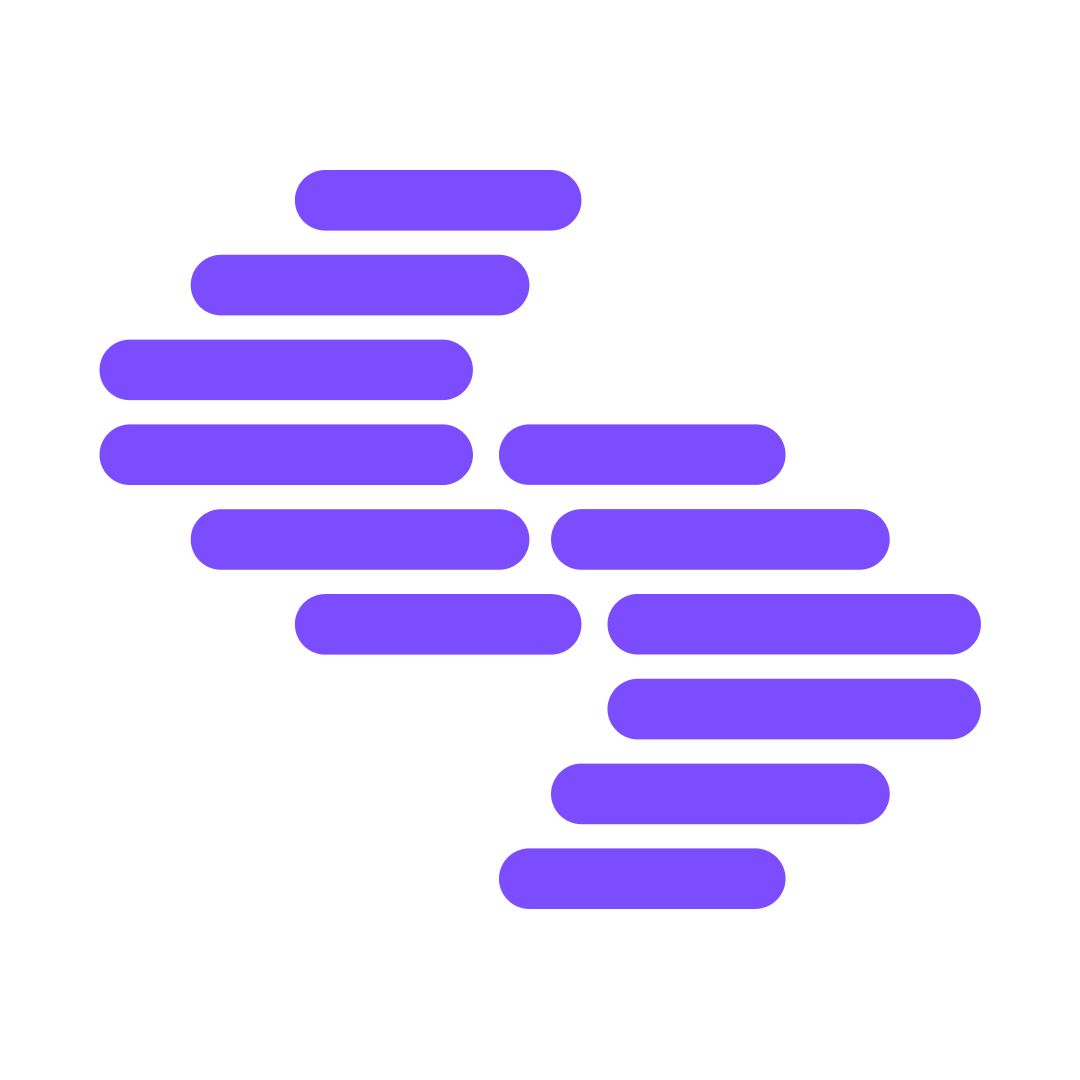Practical SaaS optimization tips for enhanced performance and user experience

Enhance platform performance and user experience with data-driven SaaS optimization. Discover actionable strategies for seamless, scalable solutions and gain the insights you need to deliver intuitive platforms that users will love.
Highlights
You’ll learn how to optimize your SaaS platform for superior user experience.
- Enhance performance: Use scalable cloud solutions, load balancing and optimize the front end to improve speed and reliability
- Reduce costs: Manage vendors and track app usage to optimize resources to lower operational expenses without compromising quality
- Focus on intuitive design: Create user-friendly platforms tailored to end users' needs
Transform your SaaS experience and stand out with superior performance and engagement.
Statistics show that SaaS applications make up 70% of total business software use, and 73% of surveyed decision-makers consider it important for business success.
From CRM and marketing automation to enterprise resource planning (ERP), Software as a Service (SaaS) has become a key part of every business’s IT setup. Hence, SaaS optimization is critical as it helps you maintain optimal performance.
What is SaaS optimization?
SaaS optimization is the continuous process of improving the performance of a SaaS platform to make it more efficient, usable and adaptable. In essence, you always check your spending, user needs and duplicate tools to align the SaaS application performance with the needs of your business and users.
Why does it matter?
Optimizing your SaaS platform is both a technical and business imperative. It allows you to address issues that impact platform efficiency. It also ensures you can maintain a cost-effective SaaS tool. Here are other reasons why it matters.
- Enhanced customer satisfaction: Optimizing SaaS platforms minimizes downtimes, making the platform more dependable.
- Higher customer acquisition: An optimized platform ensures seamless user onboarding, reducing churn and increasing customer acquisition.
- Better customer retention: Users are more likely to keep using a platform and not drop off when there are no bugs, lags or disruptions to their experiences. This leads to better retention rates.
- More robust security: Addressing bugs and vulnerabilities ensures the SaaS platform is secure, fostering user confidence in data safety and privacy.
Key pillars of SaaS optimization
While there are many aspects to SaaS platform optimization, they can be summarized under these key elements that bolster its efficiency and maximize its overall value to your business.
Resource management
This study shows that most organizations only use 49% of their provisioned SaaS licenses. So, managing resources ensures efficiency. It also supports cost savings, which is essential to a healthy ROI. Here are key pointers:
- Optimizing resources: Identifying and removing unused licenses or applications helps you avoid a SaaS sprawl and maintain a lean SaaS portfolio.
- Cost control: Tracking SaaS application usage to ensure you only pay for apps that support your business goals is a good way to maintain budget control.
- Managing vendors: Establishing strong relationships with vendors can save you costs. It can also help you negotiate favorable license terms, while regular contract reviews ensure you are aligned with the business strategy.
Enhancing user experience (UX)
A great user experience ensures users can interact with a SaaS platform without issues. Here are different ways to enhance the user experience in SaaS optimization.
- User interface design: Ensure that navigation is accessible and intuitive and focus on ergonomic layouts to reduce cognitive strain.
- Usability tests: These tests identify user experience bottlenecks, allowing teams to detect and address performance issues to make the application more user-centric.
- UX analytics and user research: Deploy user surveys, feedback loops and UX analytics to collect customer insights. These insights enable you to prioritize features that matter most to your audience.
Overcome traditional CMS issues with Contentstack: Are you tired of slow development times and rising costs due to legacy monolithic suites? Contentstack offers a modern, component-based solution designed for the needs of today's enterprises. Discover agility and improved ROI. Request a demo to learn more.
Addressing technical issues
SaaS platforms can face technical issues like downtime and service outages, latency, slow load times, poor API performance, etc. These issues can be dealt with in the following ways.
- Reducing response time: Reducing load times ensures that the SaaS platform is responsive and supports a seamless user experience
- Improving scalability: By improving the platform's capacity, you can equip it to handle increased workload at required times
Optimizing for mobile
With mobile usage dominating many sectors, ensuring your SaaS platform is responsive across all devices is essential.
- Multi-device compatibility: Ensure that the platform works across tablets, desktops and smartphones to promote a seamless user experience
- Responsive design: This ensures UI elements render correctly, making them readable and usable across screen sizes
Leveraging data-driven insights
Data analytics offers actionable insights to optimize SaaS apps to ensure they perform as expected.
- Analyzing usage patterns: Using tools like heatmaps and session recordings can help you identify patterns that inform how you refine workflows
- Timely user testing: Performing periodic usability tests can offer insights to implement updates and improve the platform's features
Strategies for SaaS platform optimization
The strategies to optimize SaaS tools are based on the pillars identified above, with the priority being to deliver an efficient platform that delivers a good user experience and saves costs for the business.
Managing traffic and scalability
Your platform's ability to handle the demands of your business’s growth affects service quality. Here are practical strategies to manage traffic surges.
- Load balancing: Use techniques like round robin, least connections and IP Hash to distribute network traffic evenly. This reduces the chance of overloading servers. Also, design multi-tenant architectures and implement auto-scaling to handle increasing user loads.
- Manage integration issues: Develop RESTful APIs with proper versioning and use message queues for asynchronous communication. Also, deploy robust error handling and retry mechanisms.
- Optimize the front-end: Optimizing front-end elements can also improve the efficiency of SaaS platforms. Compress images, reduce large JavaScript files and reduce HTTP requests to speed up load times. A smooth front-end experience keeps users engaged.
Managing cost and resources
Efficient resource use and cost optimization minimize operational costs without compromising performance. Using the following techniques, you can focus on managing licenses and IT resources.
- Manage licenses: Adjust the number of licenses or seats based on actual usage. Track SaaS licenses and remove redundant or underutilized apps.
- Resource consumption: Deploy profiling tools like New Relic, optimize database indexes, implement efficient caching strategies and use lazy loading techniques to reduce memory usage.
Strengthening security and compliance
Security gaps and lax regulatory compliance can lead to serious issues like data breaches, financial losses and lawsuits that compromise user trust. Here are security tips to manage them.
- Security vulnerabilities: Implement reliable security protocols to authenticate and encrypt data, such as OAuth 2.0 and TLS 1.3. You may also employ web application firewalls (WAF) and conduct regular penetration testing and code reviews.
- Compliance alignment: Track certificates and patches and ensure they adhere to relevant data security and privacy standards, like GDPR. This shows your platform’s commitment to trust and data protection.
Delivering proactive customer support
Customer support is often a litmus test for user satisfaction. Ensure it is supportive, data-driven and proactive. By so doing, users can have more confidence in the platform, knowing they can get help for any issues they encounter. Follow the below tips to enhance customer support.
- AI-driven support: This includes the use of AI-driven chatbots to engage with users and resolve issues promptly.
- 24/7 availability: Provide customer support via multiple channels, such as social media, telephone, email and in-app. This shows your commitment to the overall user experience.
Here is an example: A SaaS tool for managing HR integrates AI chatbots to answer user inquiries. This reduces resolution times and increases customer confidence.
How Contentstack eases SaaS platform optimization
Contentstack offers a range of features that enable you to optimize the SaaS stack while maintaining a user-centric approach. Here are some pointers to note.
- Personalization at scale: It enables you to deliver tailored experiences based on a customer’s interaction. Its A/B testing allows you to test several versions of content to determine which resonates the most with your audience.
- Automated workflows: With Contentstack Automate, you eliminate middleware, streamline the content lifecycle and create integrations with a visual editor and pre-packaged recipes. This enables you to reduce development time by up to 70%.
- Seamless user engagement: The Brand Kit enables you to create a consistent brand experience. The headless CMS also surfaces content to any customer touchpoint, helping you deliver omnichannel experiences.
- Faster publishing cycles: You can publish with ease and optimize response times during traffic surges. These tools cut publishing time by up to 75%.
Fast-track digital experiences with Contentstack. Need to create digital experiences quickly? Contentstack's content and editorial engine enables you to reach new markets and create digital experiences faster. Manage content with ease and speed. Start your free trial today.
Case studies
Good Eggs
Good Eggs' mobile app experience was slow and failing. Their tech was not designed to support a modernized customer journey.
By teaming up with Contentstack, Good Eggs reignited the mobile e-commerce experience and delivered customers' desired user experience. It also improved its search and discovery feature and streamlined its digital assets management, leading to a growth of 20k monthly app users.
"The benefit of using a tool like Contentstack is that the creative marketing teams can visually present inspiration to the user, so they see us as less of a utilitarian tool to buy dinner and more of a tool for inspiration and food storytelling," said Chris Jocson, the Chief Operating Officer.
Read here to see how Good Eggs reinvented its mobile experience.
CEATI
CEATI lacked the technology to deliver a modern experience for its audience. The platform could not handle multiple events or high workloads. “It looked like an experience from the 90s,” Akbar Naqvi, VP of Product Strategy, CEATI, said.
Contentstack's headless CMS enables it to integrate its tech stack. Now, the overall user experience is seamless, allowing the platform to handle 3,000 active monthly portal users and 400+ annual events.
“Contentstack has helped us to manage open projects and their milestones so that members can follow along with progress. Members can now open a research page and immediately see the scope, the next steps and any interim deliverables.” Naqvi said.
Keep reading to see how CEATI optimized its platform for a better user experience.
Optimizing SaaS platforms for continued success
The dynamic nature of SaaS technology means you cannot optimize the platform and take a step back. Instead, you need to track its performance and gather relevant insights to support its continuous improvement. Here are some pointers to start with.
- Continuous updates: Conduct regular updates and implement periodic usability tests to uncover gaps in the user experience. That way, you can fix issues on time and find ways to improve the platform.
- Proactive problem resolution: Real-time analytics dashboards offer developers advanced warnings of any potential issues or bugs. With that, you can address issues before they lead to outages.
- Integrate continuous feedback: Establish feedback loops so that you can listen to user pain points and build solutions centered around their needs.
FAQ section
What are the key components of SaaS optimization?
Key areas to focus on are improving the user experience and technical elements, regular testing to identify and fix issues and data-driven insights to improve performance.
What tools help monitor and optimize SaaS performance?
Using UX analytics tools and dashboards, A/B testing tools, usability testing tools, etc., you can monitor and enhance SaaS platform performance optimization.
How can I optimize my SaaS?
You can improve your SaaS stack by implementing cloud and container applications to manage load, setting up security and privacy policies and removing underused software to ensure that the platform runs smoothly.
Learn more
At around $195 billion, Gartner reports that the SaaS industry will continue its steady growth. With these investments comes a greater need to continue to optimize the platforms. Whether by improving UX/UI and security, managing computing needs or reducing latency, efforts must focus on user needs.
Contentstack enables you to do all of that with its personalization solutions, automation and front-end hosting. Now, you can reduce development time, publish faster and deliver tailored experiences that resonate with your customers. Talk to us today to get started.
About Contentstack
The Contentstack team comprises highly skilled professionals specializing in product marketing, customer acquisition and retention, and digital marketing strategy. With extensive experience holding senior positions at renowned technology companies across Fortune 500, mid-size, and start-up sectors, our team offers impactful solutions based on diverse backgrounds and extensive industry knowledge.
Contentstack is on a mission to deliver the world’s best digital experiences through a fusion of cutting-edge content management, customer data, personalization, and AI technology. Iconic brands, such as AirFrance KLM, ASICS, Burberry, Mattel, Mitsubishi, and Walmart, depend on the platform to rise above the noise in today's crowded digital markets and gain their competitive edge.
In January 2025, Contentstack proudly secured its first-ever position as a Visionary in the 2025 Gartner® Magic Quadrant™ for Digital Experience Platforms (DXP). Further solidifying its prominent standing, Contentstack was recognized as a Leader in the Forrester Research, Inc. March 2025 report, “The Forrester Wave™: Content Management Systems (CMS), Q1 2025.” Contentstack was the only pure headless provider named as a Leader in the report, which evaluated 13 top CMS providers on 19 criteria for current offering and strategy.
Follow Contentstack on LinkedIn.






.svg?format=pjpg&auto=webp)
.svg?format=pjpg&auto=webp)
.png?format=pjpg&auto=webp)






.png?format=pjpg&auto=webp)


